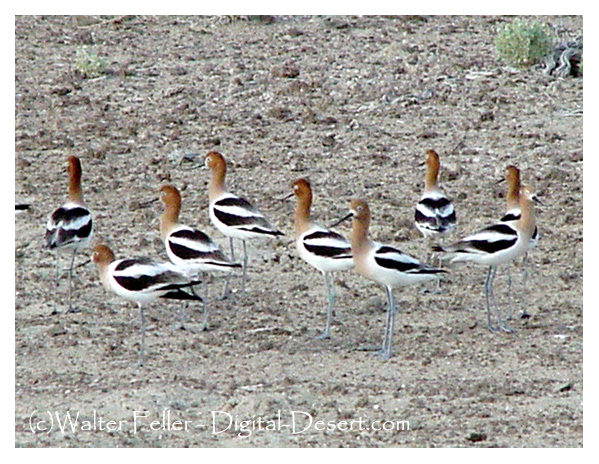A common to abundant winter visitor to salt ponds, fresh and saline emergent wetlands, and mudflat habitats throughout the Central Valley and the central and southern coastal areas. Breeds from March to mid-July, and is relatively common during this period in northeast California, the Central Valley, and coastal estuaries. Common most of the year at the Salton Sea, but only a few pairs have been known to nest.

Forages on mudflats, salt or alkali flats, in shallow ponded areas with silt bottoms, and in salt pond. Feeds by probing in mud, sweeping bill through water or soupy mud, or by swimming and tipping-up like ducks. Preferred foods include aquatic insects, crustaceans, snails, worms, and occasionally seeds of aquatic plants
— State of California
These were spotted in the Saline Valley several hundred yards away from the salt lake shoreline. They would, randomly it seemed, all take off into the air, circle around and land in the same spot they left. I imagined that was an adaptation they have made to spot predators.
A gentleman coming from the Warm Springs walked up to me and we started talking. He told me this was a “lost” flock of American avocet that drifted into the valley long ago during a storm. They found the lake hospitable enough to stay — that every time they tried to leave, they just turned back after a short distance returning to the salt sink at the bottom of the basin that was now their home.
Maybe the guy was knowledgeable and truthful, but more likely he was passing along something he heard that was passed along by someone else who heard something and so on and so forth. You never know who you are talking to.
more about the American avocet